How to Make a Subway Map with John Tauranac
Hear from an author and map designer who has been creating maps of the NYC subway, officially and unofficially, for over forty years!


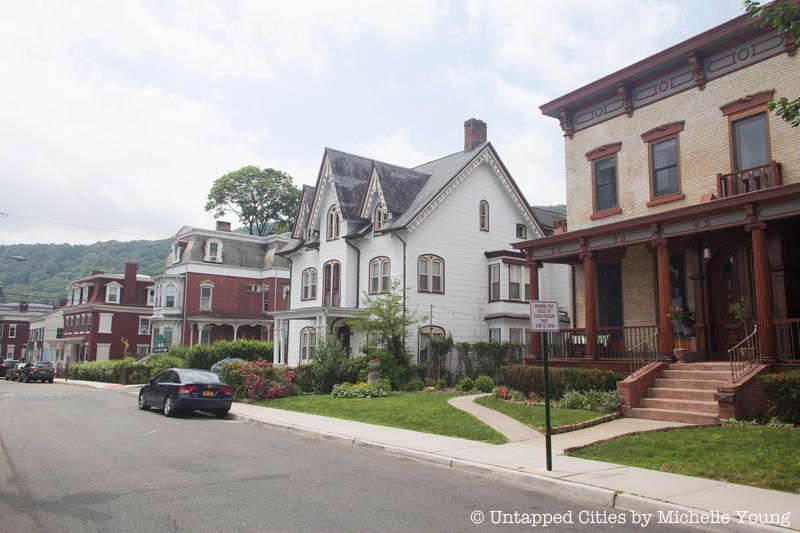
Located at the widest point of the Hudson River, the town of Haverstraw is readying for its spotlight. It has all the features of a Hudson Valley destination in the making: rich history, gorgeous architecture, hip new industries, and artists seeking an under-the-radar, semi-urban haven. But unlike its more well-known counterparts like Kingston and Beacon, Haverstraw has a palpable distinguishing element: its diversity. As of 2015, Haverstraw had the highest concentration of Hispanics and Latinos – at 67% – drawn in recent decades by affordable housing initiatives. Not only has this shifted the political profile of Haverstraw, it has created a fascinating landscape of retail and culinary destinations that are refreshingly low key.
The town is accessible via public transit: Metro North Railroad to Ossining, then a ferry operated by NY Waterway (only on weekdays) from Ossining to Haverstraw. On weekends, take a quick Uber to and from Nanuet, a stop on NJ Transit. You can also get to Haverstraw by bus from Port Authority on Coach USA/Rockland Coaches.
Now, without further ado, here are ten must-visit places in Haverstraw.
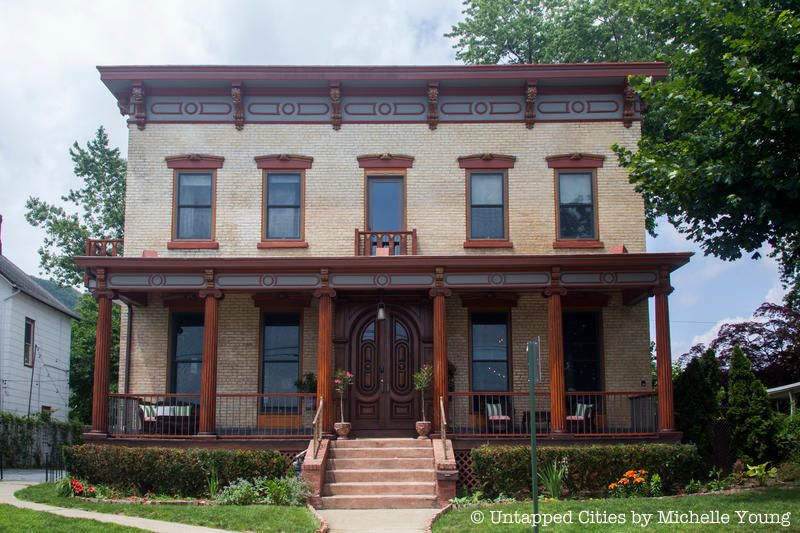
Casa Hudson is a beautiful bed and breakfast in an impeccably renovated Italianate villa overlooking the Hudson River along First Street, which is dotted by Victorian and Italianate mansions of a wide range of architectural styles. Owned by couple Andrea Caccuro, a former fashion executive, and artist Nelson Diaz, the Casa Hudson was renovated by Caccuro and Diaz by hand. The interiors are modern, with large-scale paintings by Diaz, but the restoration has paid particular attention to preserving the original details, and in many cases, re-creating aspects through clever tromp l’œil. Pay particular attention to the parquet wooden floors, the facade and the columns – even the driveway – rendered to look like other materials through clever painting. In 2015, Casa Hudson was awarded the Rockland Historical Society Preservation Merit Award for Adaptive Use.
There are three rooms in the Casa Hudson, all with private baths, named after former owners like S.C. Blauvelt, the original owner from the 1890s, H.E.P (the Haverstraw Ecumenical Project), a pre-school that occupied the house from 1970-2000, and the Roma Room, short for the Knights of Columbus which used the house as a headquarters from 1930-1970.
As Caccuro and Diaz aptly describe, the Casa Hudson is more akin to a European-style penzione – as hosts, they engage only as much as their guests would like. The Casa Hudson also hosts a regular Chef’s Table Dinner, outside next to the vegetable and herb garden, or in the villa weather depending, concocted by different local chefs, and a tomato canning workshop.

In addition to visiting Casa Hudson (or staying there), the homes along First Street are equally worthy of a walk-by. Jared Rodriguez, who operates the website Haverstraw Life and gives historical tours of the town on demand contends, there is a home for nearly every architectural style, ranging from Revolutionary-era colonial, to Renaissance revival, French Second Empire to Queen Anne Victorian, and more.
Just below First Street, within what is now the Emeline waterfront park was once the brickyards. Imagine a working waterfront with piers (some remnants can be seen today), sea walls, warehouses, and steamships, providing freight transportation in the era before railroads. Ships would ply the Hudson, connecting to the Mississippi River through the Erie Canal. Below the stately houses, which were built for the officers and owners of the various industries, were underground tunnels that connected to the waterfront. If you’re interested in the brick industry here, visit the Haverstraw Brick Museum on Main Street for more.
But going even farther back time, Haverstraw was mentioned in the 1609 shipping logs of Henry Hudson (as Haverstroo, meaning “oat straw” in Dutch) on his exploration of the New World and is considered one of the oldest names in the country. It’s also worth walking inland, up South Street for more of the eclectic mix of homes, and to get a feel of the street grid, which dates to the 1600s. Take Hudson Avenue for more great architecture.
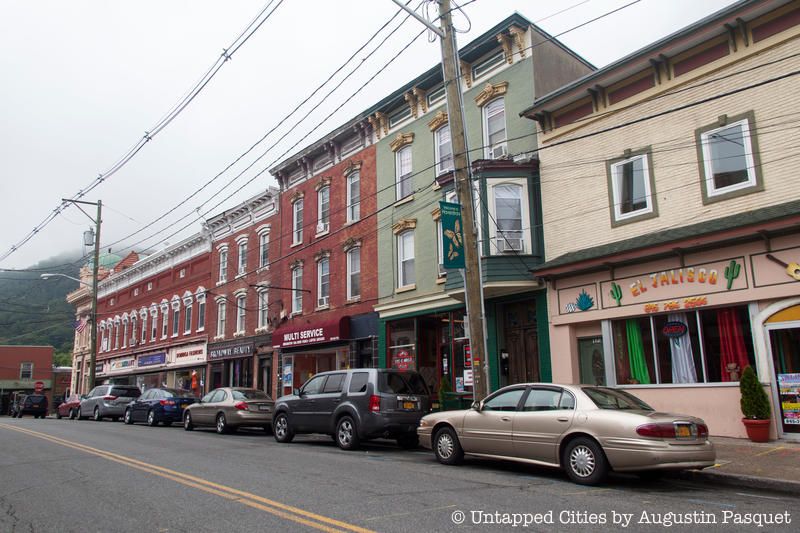
Most of the culinary spots are on or just off Main Street. You’ll find a mix of Latino fare like La Cascada (35 Main Street), Tacos Marianita (10 West Street), and Empanadas Monumental (43 Main Street), but also Lucas Candies (6 Main Street), the oldest chocolaterie in New York State located inside a wonderfully vintage shop replete with tin ceilings, tiled floors, an old elevator made by the Burwak Elevator Co., and an old-school cash register. Lucas Candies has been making chocolate here since 1896 and remains family run for the fourth generation.
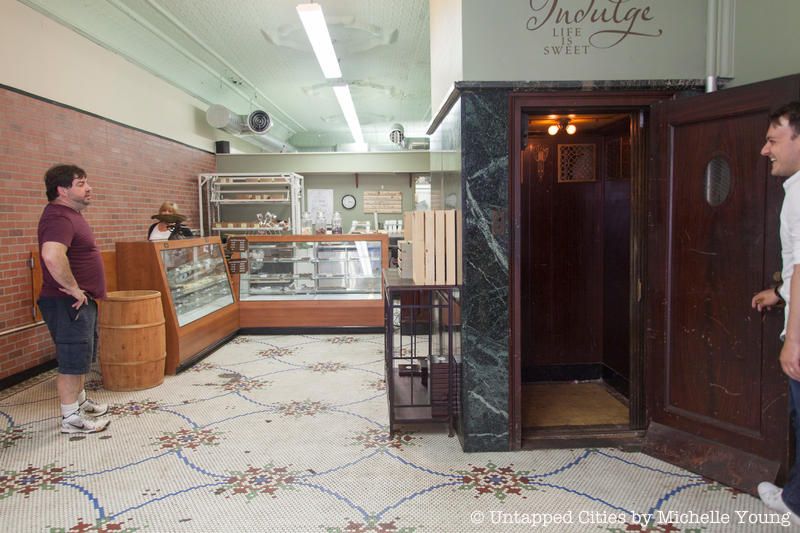
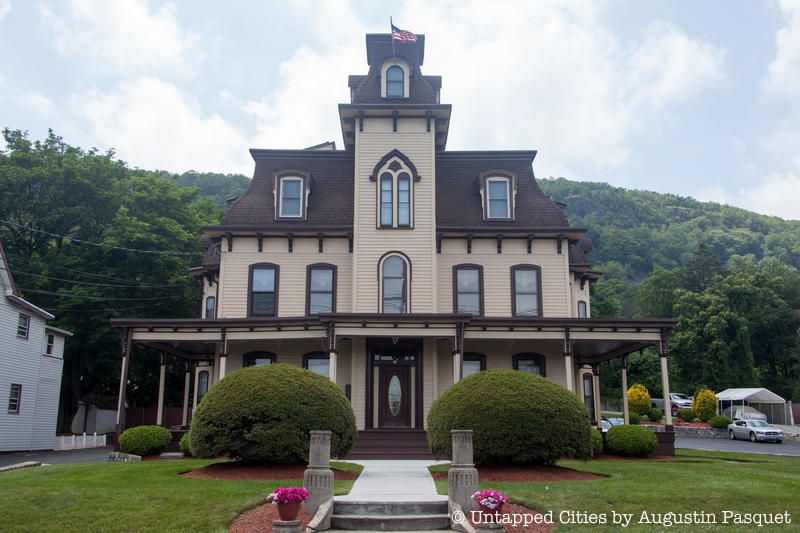
The house that inspired the painting, “House by the Railroad,” by Edward Hopper is located on Conger Avenue, just above the freight railroad tracks. Legend has it that the daughter of the owner of the home at the time, Rockland County Attorney General, Thomas Gagan, saw Hopper set up with easel behind the railroad tracks. The painting highlighted Hopper’s perception of how new transportation and industry were isolating traditional landscapes and settings.
The 1925 painting, which is now at The Museum of Modern Art, was an inspiration for Alfred Hitchcock who modeled the house from Psycho after it.
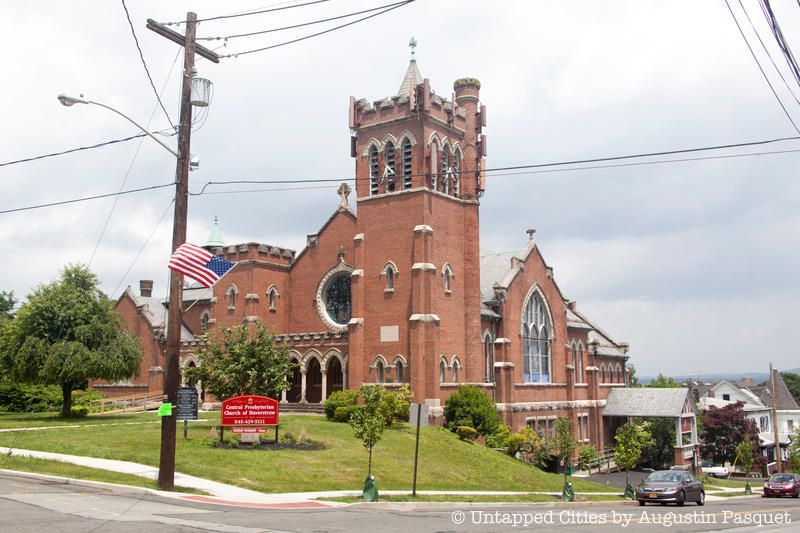
As a reflection of Haverstraw’s notable history and architecture, the Central Presbyterian Church on Hudson Avenue features stained glass windows by Louis Comfort Tiffany (known for his work in New York City) and an inlay ceiling of American Chestnut, a wood that is now almost extinct. The church moved to this spot following the 1906 Haverstraw landslide (continue on to learn more about this man-made disaster).
The church, which is still active, will host the Shades Repertory Theater on the lower level until this fall when the organization moves to the Garner Arts Center. It also hosts the annual concert for the Rockland County Concert Band.
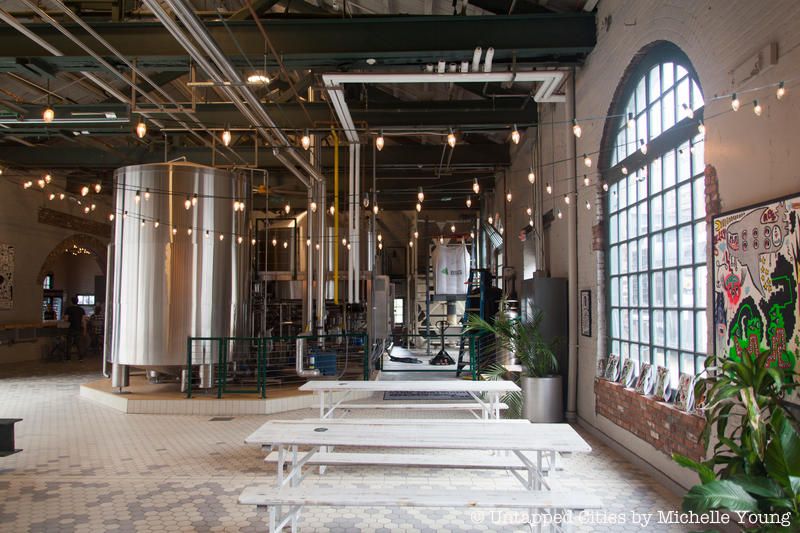
Located in West Haverstraw, a quick taxi from downtown Haverstraw, is the Garner Arts Center, a landmarked, pre-Civil War era textile mill transformed into cultural site with artist and light manufacturing spaces and a beautiful creekside sculpture trail.
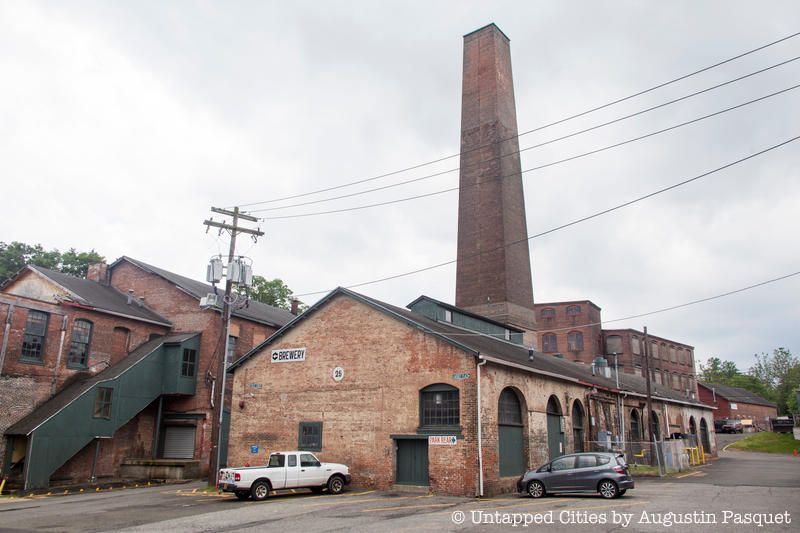
In addition to hosting an exciting array of events, the Garner Arts Center is also home to the Industrial Arts Brewing Company, a great spot to grab a cold beer in its beer hall which has many picnic tables, high tables and a bar with the backdrop of the brewing equipment.
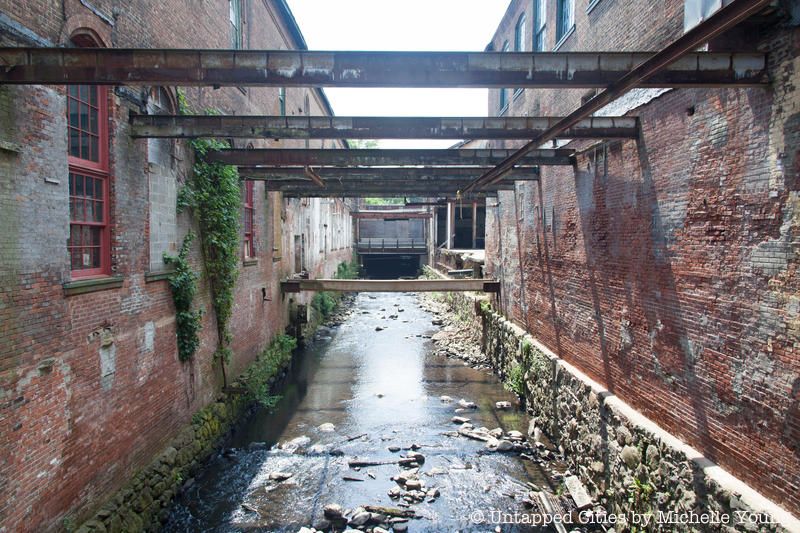

A little further inland, Letchworth Village was once a model institution for the treatment of the mentally and physically disabled. Set in a bucolic landscape and managed by the Town of Haverstraw, Letchworth Village is now a public park where abandoned buildings sit waiting for the ravages of time. Built in 1911, stone buildings are set amidst rolling hillside along curved streets with vintage-style lampposts, and you can easily sense the utopian idyll that governed the architecture and design of such an institution.
See more photographs and learn more about his unique location here.
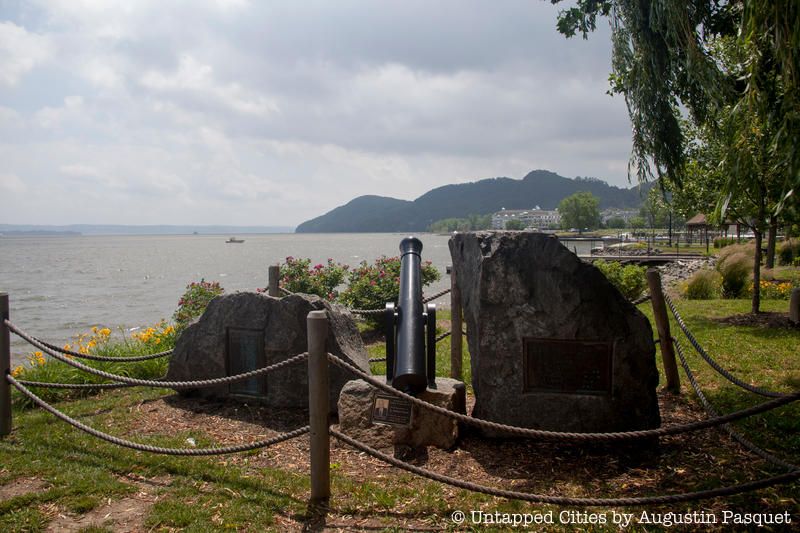
Haverstraw also has strong ties to the American Revolution. Not only did Aaron Burr frequent the town (and worked as a law clerk), “Treason House” in West Haverstraw is where at the now-demolished Joshua Hett Smith House British Major John Andre met with Benedict Arnold, who agreed to give up West Point to the British for the sum of 20,000 pounds – over a million post-2000 dollars. This event is chronicled in the AMC show TURN, about America’s first spy ring. The Treason House also played host to George Washington and Rochambeau. Nearby this spot, which is noted by a historic marker, is a road named after John Andre, who was well-respected on both sides of the revolution – no streets for Benedict Arnold of course.
Other markers of this event include “Treason Site” along the Hudson River where Andre and Arnold plotted the surrender of West Point. A rock along the waterfront at Emeline Park also notes these events and a canon points to the Treason Site slightly downriver. The French Marquis de Lafayette, who served as a general during the American Revolution also had a camp at Haverstraw in what is now Camp Hill.
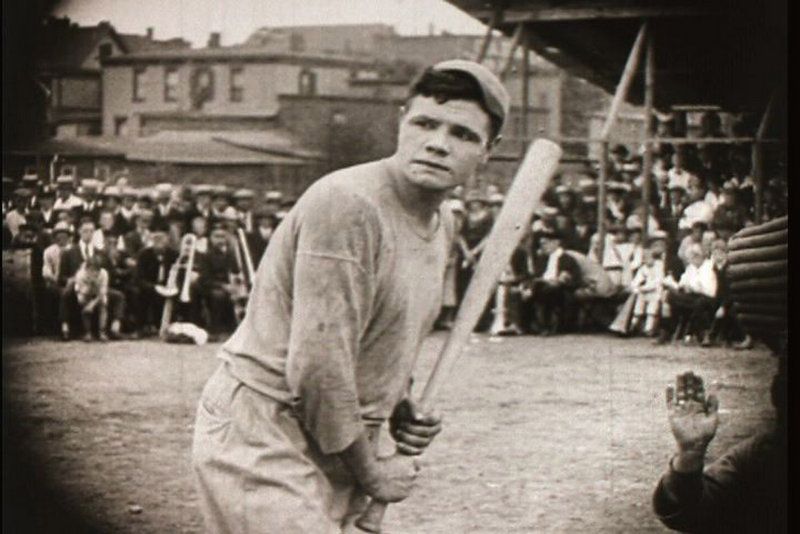
Film still of Babe Ruth in the movie Headin’ Home
Adolph Zukor, the owner of Paramount Pictures once had an estate near Haverstraw in Clarkstown. He also owned the local country club. In the summer of 1920, Babe Ruth filmed the silent movie Headin’ Home primarily at Markham Field, a stadium used by the Haverstraw farm team.
As described by Jared Rodriguez of Haverstraw Life:
A local legend is still told today, that Ruth, during filming of a scene, hit a home run ball out and over Saint Peter’s [Church]. The story has been passed down among generations of Haverstrawans since that day in 1920, as many locals were present for the filming of the scene. If the legend holds true, it is said that this home run would be one of the longest range home runs in baseball history. It is easy to understand this when visiting Babe Ruth Field in Havestraw. Stand on the home plate (which is not the original place of Ruth’s home plate, as the field was shifted since 1920; the spot is very close to original, though) and gaze across the field to the spire of Saint Peter’s. The distance is unimaginable for a home run ball. If it could be proven that the Babe hit this ball, this dusty field in Haverstraw could become an integral part of baseball history.
The hills around Haverstraw were also a hotspot for the country homes of many film stars including Charlie Chaplin, Mary Pickford, and Douglas Fairbanks.
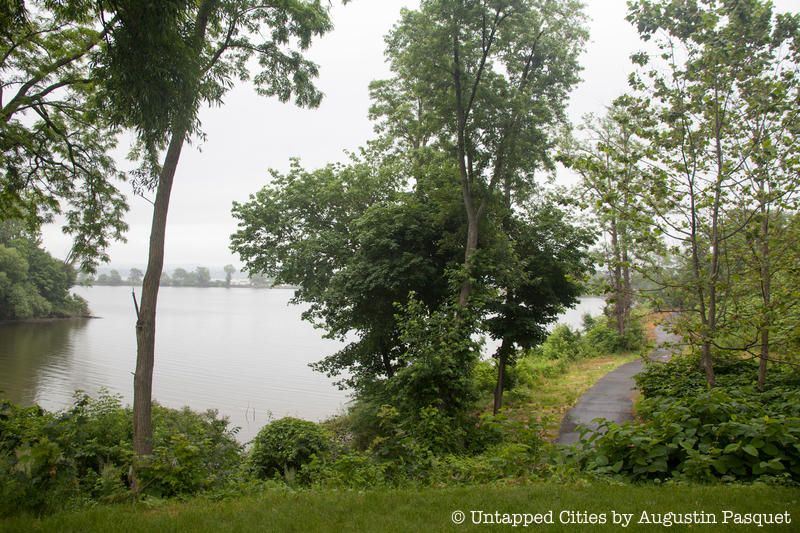 The basin in front the park was once a neighborhood that collapsed in mudslide in 1906
The basin in front the park was once a neighborhood that collapsed in mudslide in 1906
Haverstraw is also has a long history of African American culture, that has only more recently celebrated and studied thanks to a surprising archeological excavation. In the 17th and 18th centuries, enslaved blacks were brought to Hudson Valley, and in Haverstraw, they worked at the brickyards. It is known that nearly 240 slaves were brought by the Dutch to Haverstraw and a community was forged that later included both enslaved and free slaves.
They settled in a neighborhood known as the Mudhole, which itself has a fascinating history because most of the neighborhood was destroyed in a massive landslide in 1906 that resulted from the mining of the blue clay that made the local brick so notable and the tunnels that were created beneath the embankment. 19 people, 6 streets and 21 buildings disappeared that day.
A century later, local resident Virginia Norfleet made a critical discovery when building her home in the Mudhole – and came across a brick with a cross in it. It turned out to be the cornerstone of the African Methodist Episcopal Bethel Church, founded during the Civil War. This has led to the founding of the Haverstraw African American Connection, the creation of the African-American Memorial Park in the Mudhole neighborhood as well as the founding of the annual Juneteeth Festival, that celebrates the end of slavery in the United States.
Norfleet told USA Today: “It was an awakening for me when I found the brick. Most of the African-Americans in Haverstraw, we didn’t understand the depth of our history because it’s never been told.
Next, check out 27 Historic Estates to Visit in the Hudson Valley and discover our guide to Kingston.
Subscribe to our newsletter